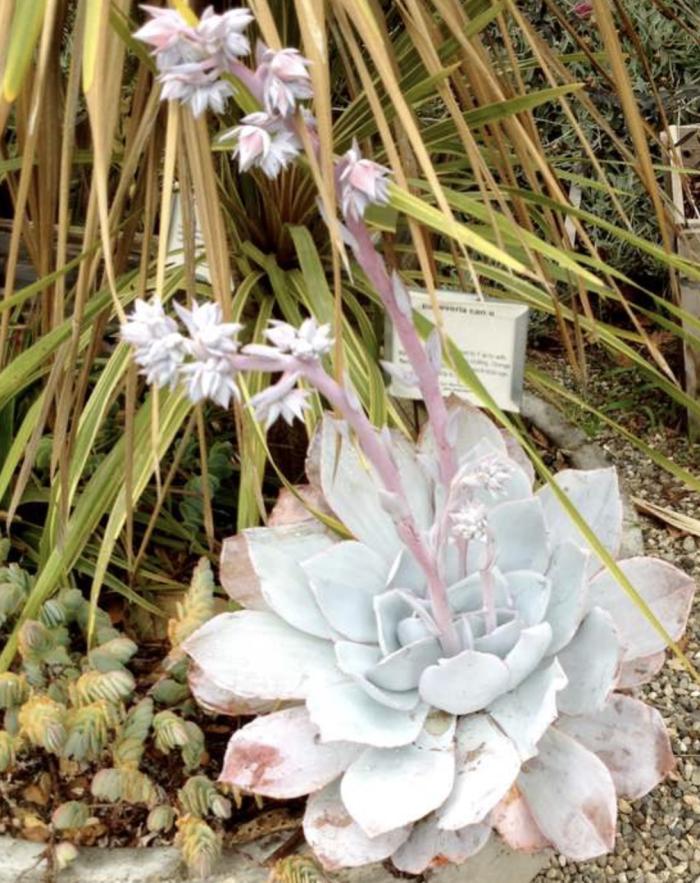Echeveria cante
Echeveria cante

Description
Among the echeverias which flower in the summer is a beautiful species named Echeveria cante, from the central Mexican state of Zacatecas. When this plant first found its way into cultivation, it was thought to be a form of Echeveria subrigida, which occurs a considerable distance away to the south and the southeast. Both of these have large leaves with a coating of powdery white, but he leaves are shaped differently and the flowers are distinctly different. Still, it was not until 1997 that Echeveria cante was finally described as a species. Echeveria cante can grow to be quite large as echeverias go, with rosettes over a foot across. The powdery whiteness of the leaves is complemented by a reddening at the margins, and the whole rosette can be tinted lavender under some growing conditions. Plants occasionally make a few offsets, but usually they are single. The flower stalks emerge in summer, with flowering commencing in July at the Ruth Bancroft Garden. A plant normally has one or two inflorescences, rising to a height of 1½ to 2 feet, with multiple short side branches bearing several flowers each. The whole stalk and its bract leaves, and even the pink outsides of the flowers, look as though they had been whitewashed. This makes the red to orange color of the flower’s interior stand out. It tolerates full sun in coastal areas but will need shade in inland areas. Does best with well draining soil.
Plant Type
Succulent
Height Range
1-3'
Width Range
Flower Color
Orange, Yellow
Flower Season
Summer
Leaf Color
Purple, Red, White, Variegated
Bark Color
n/a
Fruit Color
n/a
Fruit Season
n/a
Sun
Half, Shade
Water
Low
Growth Rate
Moderate
Soil Type
Sandy, Loam, Rocky
Soil Condition
Well-drained, Dry
Soil pH
Neutral
Adverse Factors
n/a
Design Styles
Meadow, Mediterranean, Ranch, Seascape, Spanish, Wild Garden
Accenting Features
Showy Flowers, Specimen, Unusual Foliage
Seasonal Interest
Winter, Spring, Summer, Fall
Location Uses
Entry, Patio, Walkways, With Rocks
Special Uses
Container, Mass Planting, Small Spaces
Attracts Wildlife
n/a
Water Saving Tip:
Dig-up patches of weeds and undesirable grasses from turf areas.
Use water to grow the turf you want, not the weeds you don't want! Once you have eliminated what you don't want, add sod or over-seed to repair the bare areas.